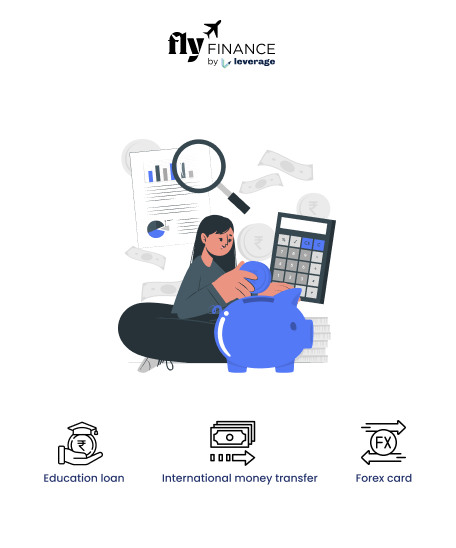Higher education often comes with a high cost, and education loans are a lifeline for many. They cover tuition, living expenses, and more. But beware of hidden charges that can affect your finances and repayment plans. In this blog, we reveal common education loan fees, helping you prepare for your educational journey wisely.
Table of contents
Origination Fees
Origination fees are one of the most common hidden charges associated with education loans. They are typically deducted from the total loan amount before you receive the funds. Origination fees can range from 1% to 4% or more of the loan amount and can add up significantly, especially for larger loans. It’s essential to factor in these fees when calculating the total cost of your loan and the amount you will need to repay.
Prepayment Penalties
Some education loans come with prepayment penalties, which are fees imposed if you decide to pay off your loan earlier than the agreed-upon schedule. While it may seem counterintuitive to penalize responsible borrowers, these charges exist to ensure that lenders collect the interest they expect to earn over the life of the loan. Always check the terms of your loan agreement to see if prepayment penalties apply.
Also Read: 5 Things to Keep in Mind to Apply for an Education Loan
Late Payment Fees
Late payment fees are perhaps the most straightforward hidden charge to understand but one that can easily sneak up on borrowers. If you miss a payment or make a late payment, you can expect to incur additional fees. It’s crucial to set up reminders or automatic payments to avoid these charges and protect your credit score.
Disbursement Fees
Disbursement fees are associated with the process of transferring loan funds from the lender to your educational institution. These fees can vary, and some lenders may charge them for each disbursement, potentially increasing the overall cost of your loan. Always inquire about disbursement fees when exploring loan options.
Collection Costs
While it’s essential to avoid defaulting on your education loan at all costs, it’s equally important to be aware of the collection costs associated with default. If you fall behind on payments and your loan goes into default, collection agencies may charge additional fees for their services, further increasing your debt burden.
Also Read: Types of Education Loan for Indian Students
Rate Margins
For variable interest rate loans, lenders often add a margin to the benchmark interest rate. This margin represents the lender’s profit and can vary between lenders. A higher margin means a higher interest rate and potentially higher overall costs. When comparing loan offers, pay attention to the margin and how it might impact your interest payments over time.
Forbearance and Deferment Fees
In times of financial hardship, you may need to request forbearance or deferment, which temporarily suspends your loan payments. Some lenders charge fees for these services, adding to your loan balance and potentially extending your repayment period.
FAQs
Common hidden charges for education loans may include processing fees, prepayment penalties, and late payment fees. It’s important to review your loan agreement carefully to identify these charges.
To avoid hidden charges, read the loan agreement thoroughly, ask your lender about any potential fees, and compare offers from different lenders. Being informed about the terms and conditions.
No, hidden charges can vary among lenders. Different institutions may have different fee structures.
Education loans are essential for education but beware of hidden charges. Review terms, ask for fee clarification, and stay informed to make wise financial decisions. Knowledge is your asset in managing these costs and securing your financial future during higher education.
To know more about the education loan, and the best bank accounts for students or international money transfers, subscribe to Fly.Finance or reach out to our experts to help ease your study abroad experience.





























